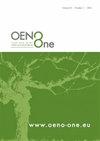Sensory identity of wine from the ancient and almost forgotten grape variety Timorasso
IF 2.2
3区 农林科学
Q3 FOOD SCIENCE & TECHNOLOGY
引用次数: 0
Abstract
Over the last few decades, there has been a gradual decrease in natural biodiversity, which is leading to the standardisation of wine products. Minor grape varieties possess key traits for producing wines with a specific territorial identity and they contribute to increasing biodiversity. Timorasso is an ancient Italian white grape variety native to the province of Alessandria in the Piedmont region. It fell into oblivion for a period of time due to the advent of phylloxera at the end of the 1800s and the abandonment of rural areas, which almost led to the extinction of this grapevine. This study aimed to identify the sensory properties that characterise Timorasso wine from different producers and production areas and to investigate the diversity of the sensory space. Sixteen Timorasso wines from the 2018 vintage and were evaluated for sensory description by a panel of nine semi-trained judges using the RATA method. The Timorasso wine was found to have a complex aromatic profile spanning fruity (citrus, tropical fruits, tree-fruit and dried/baked fruit), floral, vegetative, balsamic, honey and fuel/petroleum. The multiple factor analysis clearly differentiated wines with fruity notes from those with balsamic, vegetative and fuel/petroleum aromas. The hierarchical cluster analysis evidenced three main clusters. Cluster 1 comprised wines with pale-yellow colour and fruity-related aromas, low sourness, body and alcohol sensations. Cluster 2 comprised wines with dark yellow colour, low sourness, and high intensities of raisin and fuel aromas, probably due to specific oenological practices, such as grape maceration. Cluster 3 comprised wines with high sourness and vegetative odour. The results provide for the first time a sensory map of a grapevine that was almost forgotten until a few decades ago, but which is now considered to be among the most promising white wines on the Italian market.葡萄酒的感官身份,从古老的,几乎被遗忘的葡萄品种蒂莫拉索
在过去的几十年中,自然生物多样性逐渐减少,这导致了葡萄酒产品的标准化。小型葡萄品种具有生产具有特定地域特征的葡萄酒的关键性状,它们有助于增加生物多样性。蒂莫拉索是一种古老的意大利白葡萄品种,原产于皮埃蒙特地区的亚历山德里亚省。由于19世纪末根瘤蚜的出现和对农村地区的遗弃,它被遗忘了一段时间,这几乎导致了这种葡萄藤的灭绝。本研究旨在确定来自不同生产商和产区的蒂莫拉索葡萄酒的感官特性,并调查感官空间的多样性。来自2018年份的16款蒂莫拉索葡萄酒,由9名受过半培训的评委组成的评审团使用RATA方法对其感官描述进行了评估。Timorasso葡萄酒被发现具有复杂的芳香特征,包括水果(柑橘,热带水果,树木水果和干燥/烘烤水果),花卉,植物,香脂,蜂蜜和燃料/石油。多因素分析清楚地区分了带有水果味的葡萄酒与带有香料味、植物味和燃料/石油味的葡萄酒。分层聚类分析证明了三个主要的聚类。第一类葡萄酒颜色淡黄,带有水果香味,酸度低,酒体醇厚。第2类葡萄酒颜色深黄,酸度低,有强烈的葡萄干和燃料香气,可能是由于特殊的酿酒工艺,如葡萄浸渍。第三类葡萄酒酸度高,有植物气味。研究结果首次提供了一种葡萄藤的感官地图,这种葡萄藤直到几十年前几乎被遗忘,但现在被认为是意大利市场上最有前途的白葡萄酒之一。
本文章由计算机程序翻译,如有差异,请以英文原文为准。
求助全文
约1分钟内获得全文
求助全文
来源期刊

OENO One
Agricultural and Biological Sciences-Food Science
CiteScore
4.40
自引率
13.80%
发文量
85
审稿时长
13 weeks
期刊介绍:
OENO One is a peer-reviewed journal that publishes original research, reviews, mini-reviews, short communications, perspectives and spotlights in the areas of viticulture, grapevine physiology, genomics and genetics, oenology, winemaking technology and processes, wine chemistry and quality, analytical chemistry, microbiology, sensory and consumer sciences, safety and health. OENO One belongs to the International Viticulture and Enology Society - IVES, an academic association dedicated to viticulture and enology.
 求助内容:
求助内容: 应助结果提醒方式:
应助结果提醒方式:


